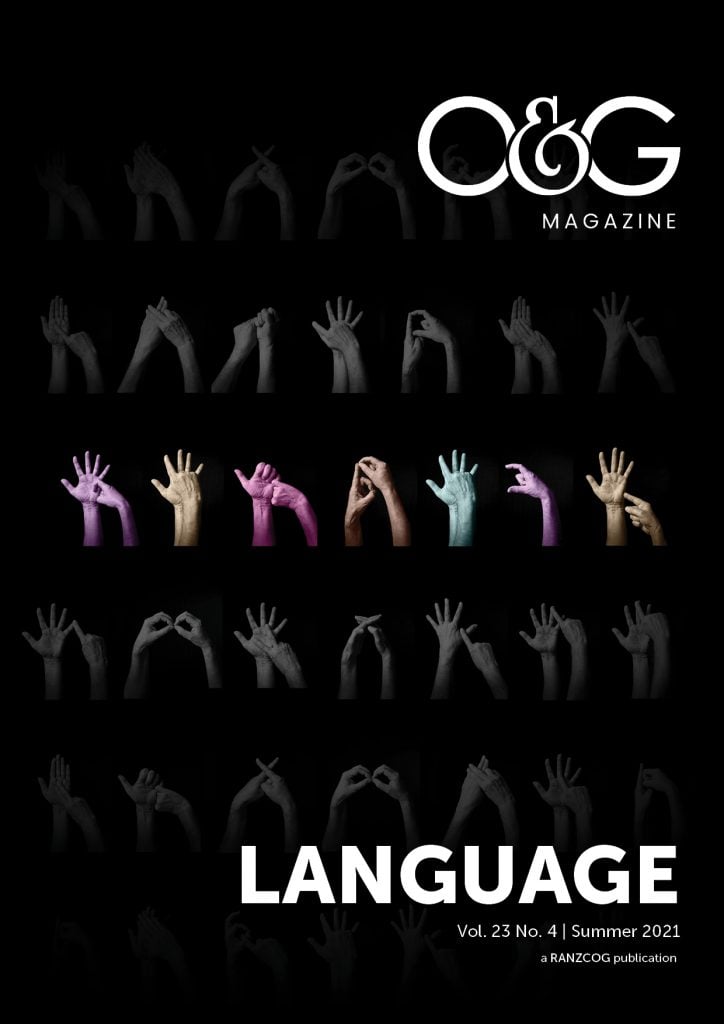This is a common experience for many Auslan (Australian Sign Language) users in Australia. Even before a Deaf person has arrived at your clinic, they have had to consider so much above and beyond what a hearing person thinks about. Thankfully, there are range of strategies and actions professionals can take when they have an appointment with a Deaf client or family member.
Before we talk about strategies, it’s important to clarify some terminology. The term Deaf (with a D) is commonly used by, and to refer to, people who identify with Deaf culture and use Auslan as their primary language. Being Deaf is a positive way of being. The term ‘hard of hearing’ is typically used to refer to people who identify as hard of hearing and align more with hearing culture. The term ‘deafness’ refers to the physiological experiences of having no, or reduced, hearing. Both Deaf and hard of hearing people may have hearing aids or cochlear implants or no hearing devices at all, some may prefer to talk for themselves in English and some may have written English comprehension. However, it is particularly important to understand that each individual with deafness have varying ways of defining and expressing themselves and clinicians must respect each individual’s choice.
Strategies to work well with the Deaf person
Auslan is a visual language. It is a full and complex language separate to English and is specific to Australia. As it is a visual language, where possible, have diagrams, pictures, videos with captions and models handy. These extra tools, being very visual, can enhance communication and improve the Deaf person’s understanding about their own health and their capacity to participate in their own health decisions. Being in a hearing-centred world, it’s common for some Deaf people to have missed out on incidental learning opportunities, so allowing for extra time in the appointment to provide some additional education is important. As well, respectfully checking for understanding.
Building a rapport with your Deaf patient as well as your interpreter will also enhance communication. For some Deaf people, having an interpreter and a professional they have not met before, building that trust and rapport is particularly important. Prior experiences of arriving at their health appointments only to be told the interpreter isn’t available and it has to be delayed (or being denied access to an interpreter) means that some Deaf people distrust the health system and health professionals. Furthermore, for health appointments that are particularly personal, some Deaf people are uncomfortable having an interpreter they just met in the room with them. It can be helpful at the start of the appointment to remind all parties that the professional interpreter is required to keep all things confidential. Learning how to greet people in Auslan can also be an effective way to show respect and build rapport.
Having consistent interpreters, especially in personal appointments like gyneacology, can help to build that rapport and trust. It’s worth asking the Deaf person for their preferred interpreters and adding that to the interpreter booking form as well as any patient records. Additionally, at the end of the appointment, ask the Deaf person if they’re happy to continue using the same interpreter. To avoid awkwardness with the interpreter currently there, you could write it down in simple English with a tick box so that they can do it privately to let you know.
Staff turn-over and availability of interpreters can make it difficult to have consistency. So if it isn’t possible, effective and detailed handover between staff is crucial. This will mean that the Deaf person does not have to re-explain about their history, language, culture, preferred communication strategies, preferred interpreters and so on.
Oftentimes professionals need to explain about medication schedules and instructions for pre-surgery. This is important information but can be difficult to comprehend. It can be helpful to prepare a clear diagram and/or table (with pictures where possible) to make the instructions, dates and times clear for the Deaf person and interpreter; and give it to the Deaf person to take home and refer to. Similarly, consider a range of communication options (letters and emails in simple English, SMS or the National Relay Service) when communicating with patients about their appointments. If future appointments are needed, it’s easier to organise them while the interpreter is there.
Strategies to work with interpreters
It’s also important for professionals to know how to work effectively with interpreters. If there is time before an appointment, and it is appropriate, providing the interpreter with any context or background information can help to ensure an effective interpretation.
When the interpreter is working, don’t ‘gawk’ at them. It’s natural to be fascinated by the process but this can erode the Deaf person’s trust in you as well as the interpreter and make the most important person feel invisible. Always direct your attention to the Deaf person. Talk directly to them, ‘how are you today?’ rather than ‘can you ask them how they are?’ Equally, if you have any questions about Auslan or Deaf culture, direct them to the Deaf person.
If any physical examinations are necessary, allow the interpreter and Deaf person time to discuss how they would like to set up the room to ensure the Deaf person is comfortable.
Usually, there is quite a bit of medical jargon (medications, organs, conditions); be prepared the interpreter may ask you to explain what they mean. Try to use simple English, models, drawings and diagrams wherever possible.
There may also be appointments where there are two interpreters, a hearing Auslan<>English interpreter and a Deaf interpreter usually working from Auslan into non-conventional Auslan. Deaf interpreters are NAATI certified and they work with many clients, but are particularly skilled to interpret for Deaf people who are immigrants to Australia and aren’t fluent in Auslan or have not developed a full language. When working with the two interpreters, continue to direct your attention to the patient and family and allow more time for the appointment.
Preparing for an Auslan-interpreted appointment
If you’re feeling unsure about anything ahead of your appointment with a Deaf person and you want to learn more about Auslan or Deaf culture or Auslan-friendly resources, there is plenty of information and resources available. The Australian Sign Language Interpreters Association (ASLIA) has video resources about how to work with interpreters. You can also find the Interpreter’s Code of Ethics on their website. Any of the Deaf societies (such as Deaf Services, Deaf Can Do, Expression Australia, Access Plus) websites have information about where to learn Auslan or access Deaf Awareness Training. The Queensland Health, Statewide Deafness and Mental Health Services also has plenty of resources including ‘Guidelines for working with people who are deaf or hard of hearing’.
Your efforts to ensure effective communication and culturally respectful behaviour are vital for the health and well-being of Deaf patients and their family.
Our feature articles represent the views of our authors and do not necessarily represent the views of the Royal Australian and New Zealand College of Obstetricians and Gynaecologists (RANZCOG), who publish O&G Magazine. While we make every effort to ensure that the information we share is accurate, we welcome any comments, suggestions or correction of errors in our comments section below, or by emailing the editor at [email protected].






Leave a Reply